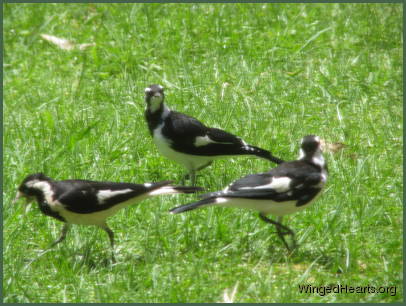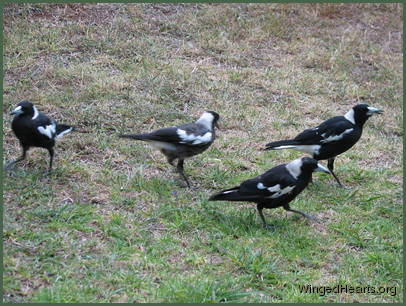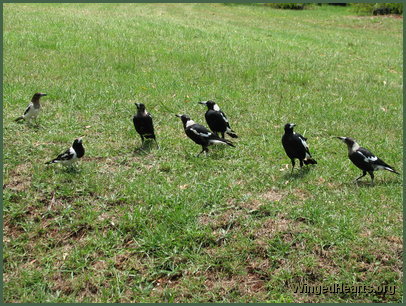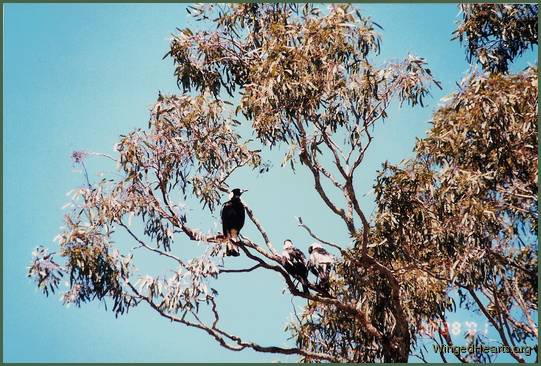Submitted by Gitie on 16 June, 2010 - 01:46
In the first three parts we examined three key features we can use to recognise birds from a distance. The fourth way that I am going to tell you about today is one of my favourites, but it does require the birds to be close enough for detailed observation. Another way would be to use a pair of binoculars.
The method I'm talking about is to look at their plumage patterns. Like our fingerprints, the feathers of each bird forms a distinctive pattern.
Look at the three peewees in the picture below. At first glance you may think that they all look the same. But look again more carefully at the details of the black white feathers and you will three separate patterns.


Submitted by Gitie on 15 June, 2010 - 00:10
In the previous posts we looked at two methods of recognising individual birds:
1. Using shape, form and size, and
2. Using their general characteristics.

In this post we'll examine another useful technique namely, identifying them from their posture and movement.
Birds are much like humans in this regard. Not only do they have unique physical features, shape and form - each bird also moves as uniquely as does each human being.

Submitted by Gitie on 13 June, 2010 - 00:17
 'How will I tell which bird I am talking to?'' - this is a problem that perplexes many bird lovers.
'How will I tell which bird I am talking to?'' - this is a problem that perplexes many bird lovers.
The human brain faces many challenges in trying to recognise individual birds.
Firstly the birds are much smaller than us which makes their unique features harder for our eyes to spot. Our eyes also cannot see many of the colours in the indigo-violet range unlike the birds who can see many more frequencies of colour than us. To make matters more difficult the smaller birds in particular don't sit still long enough for eyes to get a proper fix on them to be able to notice and learn their individual characteristics.
Our brains need some training and time to get used to the bird patterns. Once we know what to look for it becomes much easier to identify them.
There are 6 easy ways to recognise a bird. Over the next few days we'll cover each of these in more detail.
In today's post we'll look at the first key: Shape, Form and Size.
Every bird is unique regardless of the species. Look at their general shape and size. Try and spot the differences:






 'How will I tell which bird I am talking to?'' - this is a problem that perplexes many bird lovers.
'How will I tell which bird I am talking to?'' - this is a problem that perplexes many bird lovers. 



